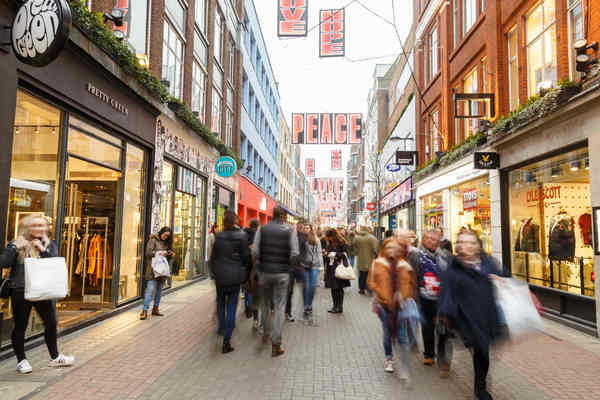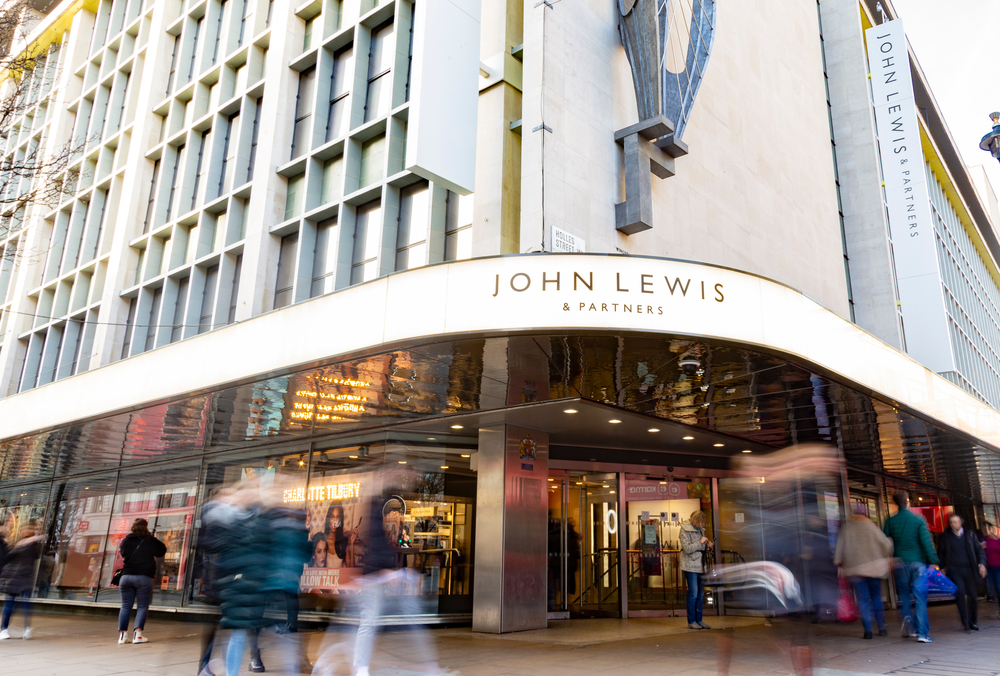Recent years have seen countless headlines about the death of the high street, as the digital revolution sent the heads of traditional bricks-and-mortar retailers spinning.
This Christmas though, the high street was gifted an uptick in footfall for the first time in six years, according to the latest figures from Springboard released this week.
Although the statistics were modest, just a 0.2 per cent drop in footfall instead of 2015‘s 2.2 per cent, it could well mark a turning point forthe UK’s high streets at such a crucial time.
Further statistics from sources like intelligence company Verint suggest the majority of shoppers believe speaking with a person will always be an integral part of the retail experience.
Nottingham Business School’s Professor Cassidy suggests the high street may have never been on its death bed: “There is a view that the ‘death of the high street’ has always been exaggerated. Although the UK high street has clearly suffered a loss in direct sales as online retail has developed, there have been related benefits to High St footfall from this.
“In particular, the trend for those who order online to ‘click and collect‘ and so continue to visit stores.
“There has also been an increase in retail sales generated from tourist spending, particularly in London, since the pound‘s sharp fall against other currencies following the EU referendum in June.
“However, having said all this, high street retailers overall delivered a fourth Christmas in succession of declining sales to cap a dismal 12 months for the sector.”
“The ‘death of the high street’ has always been a meaningless concept.”
Andrew McVicker, director at retail property consultancy firm FSP, added that the recent Christmas figures didn’t go far enough to quash fears of high street decline.
“We don‘t really buy into death of the high street; there‘s always going to be winners and losers. Yes, there‘s an inevitable consolidation of the high street but I don‘t see this concern being offset by the recent Christmas figures.
Despite this, footfall may not be the most accurate indicator of the high streets’ current health.
“Our national research shows that footfall doesn‘t necessarily equal turnover and while footfall may be up versus previous years, shoppers perceive their spend per visit to be going down,” McVicker said.
“Instead, we‘re seeing a trend towards the rise of the savvy, experiential shopper, opting for higher frequency, lower spend visits. People need to go out in the world to see touch and experience but unless the experience and offer is compelling, they will go home and buy online.”
READ MORE: High street experiences first footfall uptick since 2011
Lead analyst at Fung Global Retail & Technology John Mercer argues that the concept of the high street itself is inept, and that the focus should shift to the shopper.
“The ‘death of the high street’ has always been a meaningless concept,” he said.
“Retail is shaped by consumer demand: if consumers want to buy online or in shopping centres or on a local high street, then the retail landscape will be shaped around that demand.
“Retail is neither a museum nor a charity, and shoppers cannot be forced to shop where they don’t want to purely for the sake of preserving the concept of a high street.
“Similarly, looking at footfall numbers can give a misguided view of retail demand. Footfall is declining not only because more sales are going online, but because shoppers research online before visiting stores: they are therefore browsing less instore and are undertaking more targeted visits to physical stores.”
“Shopping centres can focus on their core customer, understand what they want and provide them with this.”
For those retailers trying to entice shoppers back to the high street, lessons can be learned from shopping centres, which have gone from strength to strength capitalising on post-Brexit vote tourism spend.
Research from business intelligence research consultancy Future Thinking suggests that 40 per cent of consumers visit shopping centres for the experience, including social and entertainment elements.
McVicker said: “Shopping centres have the advantage of their singularity of ownership. They have the opportunity to manage the environment and create that experience for the customer.
“Shopping centres can focus on their core customer, understand what they want and provide them with this. On the flip side, the high street suffers from not being able to operate as cohesive offer, with independent landlords focussed almost exclusively on rent.”
Mercer said there were three key elements that bricks and mortar stores must focus on in the coming months.
READ MORE: Retail parks footfall surges as shopping centres & high streets lag
“Shopping centres are likely faring better as they provide a superior shopping experience for leisure shoppers. In the coming years, we think three core functions will drive footfall at brick-and-mortar stores,” he said.
“Convenience, shoppers making necessary, distress purchases that are needed quickly.
“Collection, shoppers picking up online purchases, and destination leisure shoppers making special trips to stores offering quality shopping experiences
“Modern malls look well placed to cater to the last of those three purposes. Meanwhile, local high streets look well positioned to cater to demand for convenience and collection.”
Despite Mercer’s predictions, there are still plenty of obstacles facing high street retailers that make footfall an after thought.
Rising inflation and import costs aside, April will see another rise in minimum wage as well as a sharp increase in business rates.
Nelson Blackley of the Nottingham Business School adds: “Online only retailers such as Asos, Amazon and Boohoo will see the rates bills on their distribution centres come down, further exacerbating the gap between struggling high street retailers and their fast-growing online rivals.
Click here to sign up to Retail Gazette’s free daily email newsletter


















